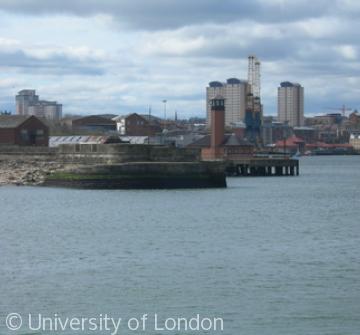Defending the port

The mouth of the Wear, source of much of the nation’s power, was a natural enemy target in wartime. Nor were its inhabitants any less afraid of privateers, repeatedly petitioning for better military protection. The first permanent defences appeared during the War of Jenkins’s Ear, c. 1742, and a barracks in 1795. All these features were on the shoreline, and almost every trace has been lost to erosion or new dock-building. The first battery of four guns, soon increased to six, stood on scrub and sand dunes overlooking the river entrance at the Coney Garth. A south battery of four guns, c. 1745, at Jockey Dike Nook, beyond St John’s chapel, was washed away by the sea in about 1780. The older battery survived into the 19th century, though severely eroded.During the Seven Years’ War (1756-63), cannon were stationed on the new south pier, others north of the harbour entrance, and a long-standing battery of six guns at Roker eventually gave its name to the cliff.A new fixture walled in stone and brick was called Paul Jones’s battery after the town’s tormentor who threatened ‘the most revolting cruelty’ during the American War of Independence. Later enlarged, mounting four 24-pounders and with a furnace to heat shot, it became Black Cat battery in 1805, when a lonely volunteer sentinel after an evening in the George inn mistook a large black cat for the devil.Decades of war against the French brought more guns to the warren, town moor, at Hendon baths and Blue House, all later lost to the sea or to Hudson dock. The Black Cat was replaced c. 1873 by the substantial Wave Basin battery, just inside the harbour, housing four carriage-mounted 80-pounder rifled muzzle-loading (RML) guns. This is a rare survival from a time of transition between cannon and modern artillery, and was obsolete within a decade, though sometimes used for machine guns and boom defences.During the second world war, the inner pier-heads, fitted with guns in 1940, were named Barrons Battery. Anti-aircraft batteries appeared at Whitburn and elsewhere, and the Alexandra bridge’s upper deck was used to mount searchlights and anti-aircraft guns.
Content generated during research for two paperback books 'Sunderland and its Origins: Monks to Mariners' (ISBN 13 : 9781860774799) and 'Sunderland: Building a City' (ISBN 13 : 978-1-86077-547-5 ) for the England's Past for Everyone series






